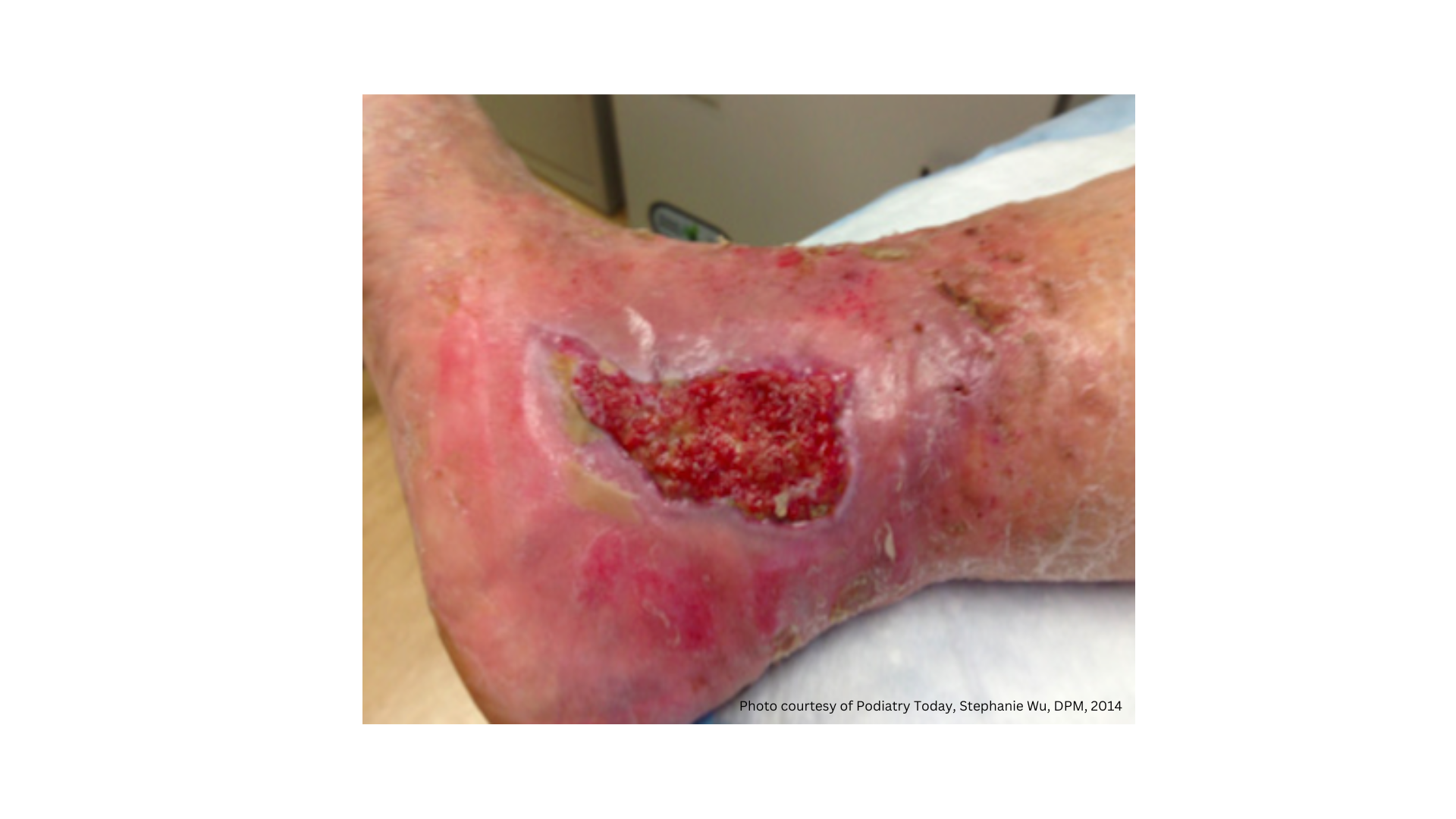Osteomyelitis: What is it and How is it Treated?
March 21, 2014
Part 3 in a series on infection management
Part 1 | Part 2
By Bruce E. Ruben MD
Osteomyelitis is an infection and inflammation of the bone or bone marrow caused by bacteria or other germs. Osteomyelitis is most often caused by the bacteria Staphylococcus, though it can also be caused by a fungus or other germs. With osteomyelitis, bacteria can spread to a bone from infected skin, muscles, or tendons in close proximity to the bone.


This happens in several ways. First, if someone has an infected sore elsewhere in the body, the infection can "spill over" to neighboring body parts including skin, muscles and tendons. In this case, the underlying bone can become infected, resulting in osteomyelitis. An example is a patient with diabetes who has a foot ulcer that spreads to become a soft tissue infection. Left untreated, the infection can then spread to the bones in the feet.
Another way in which infections spread to the bone is through the blood. The infection may exist in a totally unrelated part of the body and then travel through the bloodstream, finding its second home in a bone.
Bone infections can also result from bone surgery, particularly when screws, plates and other prosthetic devices are installed in the bone. Invading bacteria can enter during the surgery or travel to the surgical site through the bloodstream and then attach themselves to the implants.
Symptoms of Osteomyelitis
The signs of osteomyelitis include bone pain, fever, chills, excessive sweating, swelling, redness and pain at the infection site. Patients may also notice swelling in the lower extremities.
Diagnosing Osteomyelitis
Along with the symptoms listed above, there are clinical tests to determine if osteomyelitis is present. They include blood cultures, bone biopsies, scans, x-rays, magnetic resonance imaging (MRI) and needle aspiration. If a doctor suspects that a patient may have a bone infection, it is important to order a test so that treatment may begin as soon as possible.
Treatment of Osteomyelitis
Treatment for osteomyelitis involves resolving the infection through a combination of IV antibiotic therapy and excellent wound care. Sometimes, when the infection is attributed to the installation of hardware, that hardware must be removed in order to resolve the infection. Then, bone grafts may be installed to fill in the spaces left by the removal of bone tissue and to encourage the growth of new bone tissue.
About the Author
Dr. Bruce Ruben is the Founder and Medical Director of Encompass HealthCare, located in West Bloomfield, Michigan. Encompass Healthcare is an outpatient facility featuring advanced wound care, IV antibiotic therapies, hyperbaric oxygen treatment, nutritional assessment, and other treatment modalities. Dr. Ruben is board certified in Internal Medicine, Infectious Disease, and in Undersea and Hyperbaric Medicine. He is a member of the Medical and Scientific Advisory Committee and National Spinal Cord Injury Association (NSCIA) board.
The views and opinions expressed in this blog are solely those of the author, and do not represent the views of WoundSource, Kestrel Health Information, Inc., its affiliates, or subsidiary companies.
The views and opinions expressed in this content are solely those of the contributor, and do not represent the views of WoundSource, HMP Global, its affiliates, or subsidiary companies.







